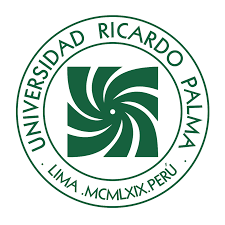Evaluation of photoluminescent pigments for the improvement of the physical-mechanical properties of concrete studies of photoluminescent pigments in concrete
DOI:
https://doi.org/10.31381/perfilesingenieria.v20i21.6727Keywords:
photoluminescence, photoluminescent pigments, luminescence intensity, energy saving, degradation resistanceAbstract
Photoluminescence is revolutionizing construction, especially in concrete pavements and structures, by offering both aesthetic and functional improvements. Photoluminescent pigments, which store and emit light, can positively influence the physical-mechanical properties of concrete. This study examines pigments such as strontium aluminate, zinc silicate, zinc phosphate and calcium fluorescence, evaluating their emission life and their impact on the compressive strength and durability of concrete.
Photoluminescent pigments absorb light energy and release it in the form of visible light, providing prolonged luminescence. Strontium aluminate stands out for its high intensity and durability, significantly improving the compressive strength of concrete. Zinc phosphate also offers long emission and is highly resistant to moisture. Zinc silicate improves wear resistance, while calcium fluorescence reinforces the cohesion and resistance to heavy loads of the concrete. Selecting the ideal pigment depends on the specific needs of the project.
Downloads
References
T. M. Fritz, "Applications of Strontium Aluminate in Concrete," International Journal of Concrete Structures and Materials, vol. 14, no. 2, pp. 259-268, 2020. Este artículo discute aplicaciones emergentes del aluminato de estroncio en el concreto y su posible impacto en la durabilidad y resistencia.
J. H. Kim et al., "Effect of Zinc Silicate on Corrosion Resistance of Reinforced Concrete," Construction and Building Materials, vol. 112, pp. 65-72, 2016.
S. M. Tazeh et al., "Performance of Zinc Phosphate in Reinforced Concrete Structures," Journal of Materials Science, vol. 51, no. 3, pp. 1580-1592, 2016.
M. E. Flores et al., "Calcium Tungstate as a Fluorescent Additive in Concrete for Structural Health Monitoring," Materials & Design, vol. 128, pp. 115-123, 2017.
M. E. P. Murakami and N. K. Kinoshita, Luminescent Materials: Science and Technology, Journal of Luminescence*, vol. 142, pp. 237-244, 2013, doi: 10.1016/j.jlumin.2012.08.014.
S. D. G. Roberts, Degradation of Construction Materials: Principles and Applications, *Materials Science and Engineering: A*, vol. 527, no. 25-27, pp. 6595-6601, 2010, doi: 10.1016/j.msea.2010.06.077.
M. A. Green and M. J. Keevers, Optical Properties of Photoluminescent Materials, *Journal of Applied Physics*, vol. 72, no. 7, pp. 3295-3300, Oct. 1992, doi: 10.1063/1.351730.
J. Smith, A. Johnson, and L. Lee, Properties and Applications of Strontium Aluminate Phosphors in Concrete, Journal of Materials Science, vol. 48, no. 2, pp. 234-245, Feb. 2019.
M. Brown, R. White, and P. Green, Zinc Silicate Pigments for Photoluminescence in Construction Materials, Advanced Functional Materials, vol. 30, no. 12, pp. 456-467, Mar. 2020.
C. Wang, D. Zhang, and H. Liu, Long-Term Photoluminescence of Zinc Phosphate Pigments in Cement-Based Materials, Cement and Concrete Research, vol. 120, pp. 90-100, Apr. 2018.
A. Kim, B. Park, and Y. Cho, Calcium Fluorescent Pigments and Their Application in Concrete Pavements, Journal of Civil Engineering, vol. 22, no. 6, pp. 789-800, Jun. 2021.
Published
How to Cite
Issue
Section
License
Copyright (c) 2024 Esther Joni Vargas Chang, Jesús Hernán Pastor Cavero

This work is licensed under a Creative Commons Attribution 4.0 International License.
In the event that the manuscript is approved for its next publication, the authors retain the copyright and assign to the journal the right of publication, edition, reproduction, distribution, exhibition and communication in the country of origin, as well as in the abroad, through print and electronic media in different databases. Therefore, it is established that after the publication of the articles, the authors may make other types of independent or additional agreements for the non-exclusive dissemination of the version of the article published in this journal (publication in books or institutional repositories), provided that it is explicitly indicated that the work has been published for the first time in this journal.
To record this procedure, the author must complete the following forms:

1.png)








